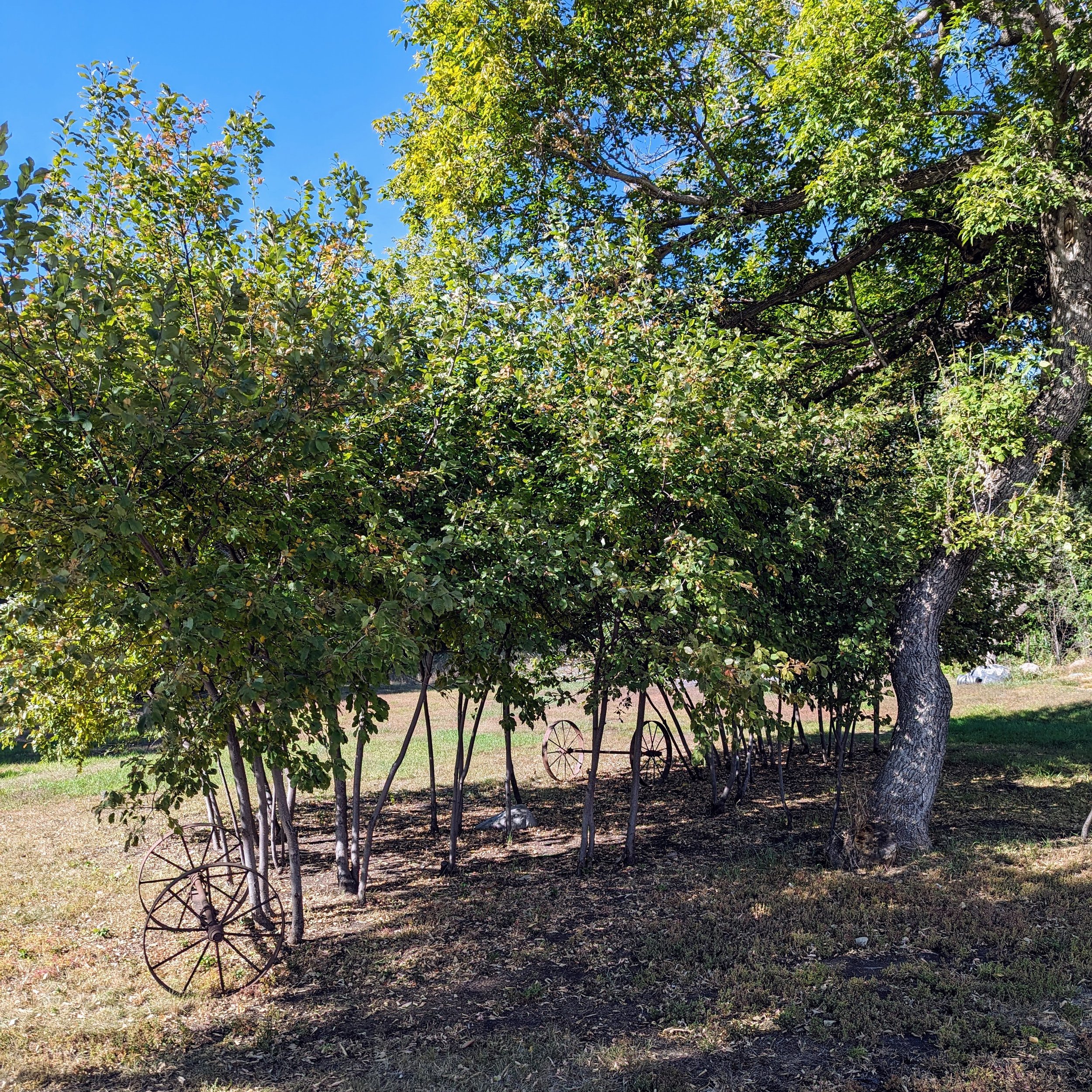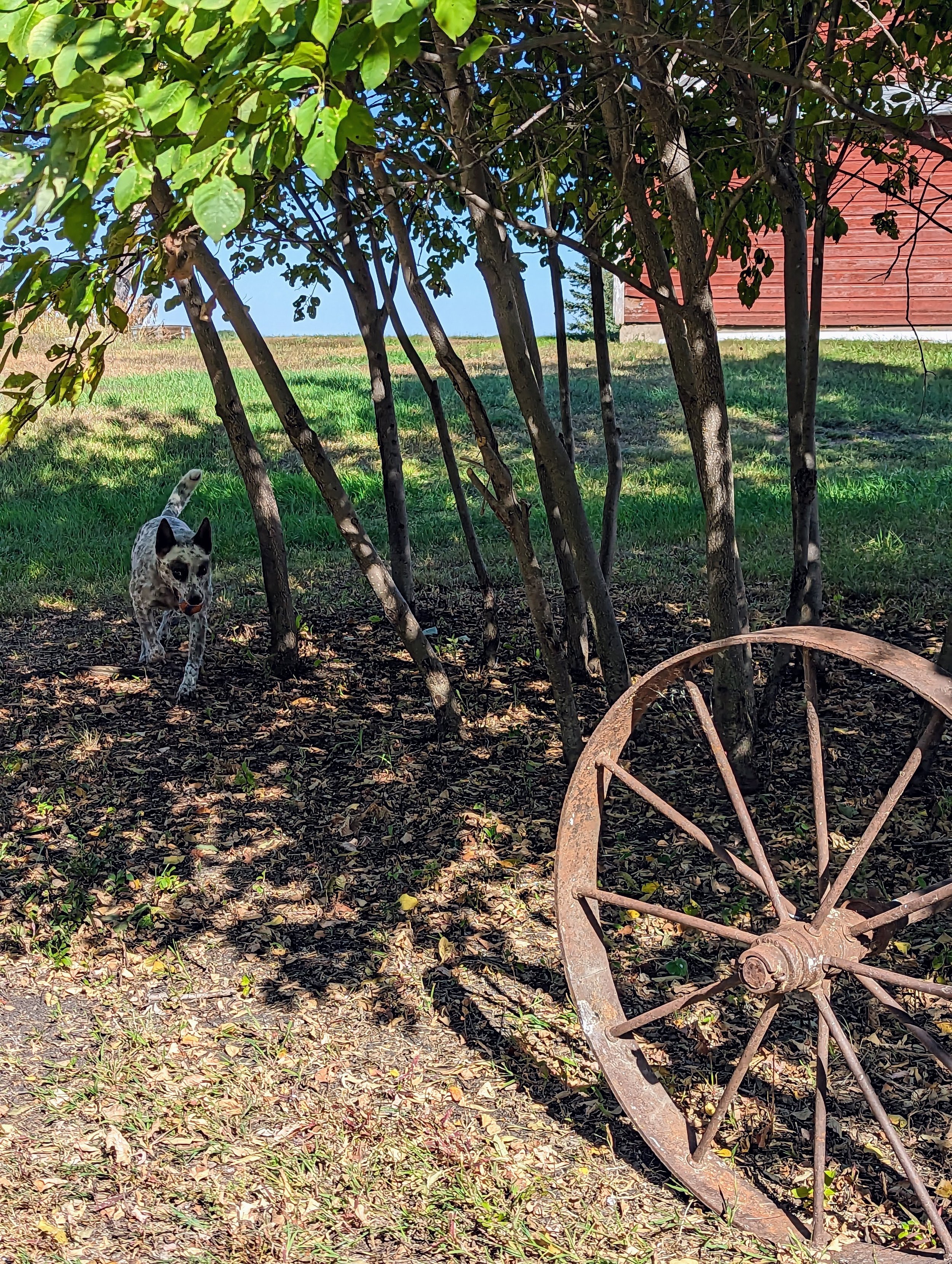The Layers Underneath (part 2)
The large cottonwood tree in this photo was here when my dad bought the farm in 1976, and it’s somewhere between 80 and 100 feet tall. I’m bad at estimating.
A month ago I was playing with Wink outside, during the two weeks of beautiful weather we are allotted each year in North Dakota. That morning, I had seen a doe and her fawn out in our trees. Winkie and I played ball all over the yard, but I felt drawn out to the old tree-line, in part because I had seen the deer that morning.
The trees on the farm can be divided — rather roughly — into three age categories. The oldest are the trees that were here when my dad bought the farm in 1976. The next oldest are the trees he planted between 1977 and 1980. And the youngest trees are the trees around the house that he put in when my sister graduated in 2005.
I say roughly, because these are the ages of the trees that have been planted with intention, by human hands.
The thing about these old farmsteads is the things you find in the underbrush. And the thing about the underbrush is that it is made up of “volunteer” trees and new growth that has not been established “with intention.” As Jeff Goldblum says in Jurassic Park: life finds a way.
Visit any old farmstead out around here, and you’ll find layers. And there is a special kind of archaeology to each farmer’s quarter of land.
Some folks may have a pasture filled up with rows of old vehicles and implements dating back decades; walk through this museum to rural life and you can learn a lot about what a guy keeps (or doesn’t), his brand loyalty, what’s been scavenged for parts. Depending on what’s out there, you may be able to examine the remnants of abandoned equipment to determine what he used to grow and how he used to grow it.
My dad has a certain aesthetic, and he likes to keep things really tidy, but the layers are still there. Most of the old stuff we find is really deep, and really old. Remember the old sewing machines? That was not the only thing the original owners left for us. It was common practice in the 30s and after to leave worn out farm equipment in the tree line, and to just let the trees grow over it. Any time my dad has worked the tree line, he has pulled out ridiculous amounts of scrap iron and rotting wood: old plows, chains, iron wheels. He’s torn down old corn cribs. He’s been cleaning this stuff out for over 40 years. He keeps up on his tetanus shots, too.
During the years I was in Idaho, my dad cleaned out some of the old chokecherry trees and discovered a little stand of new trees that had self-seeded. This little vignette is where I saw the deer, but I didn’t have my phone, and I wasn’t wearing my glasses. I just got to enjoy the fleeting moment of seeing these deer among the several young trees, one old tree, and these old iron wheels. All these layers of what this parcel of land has been, is, and could continue to be. It was all these layers of time stacked on top of each other into one image; a living embodiment of how I paint.
I guess if I had to show you the roots of Spiritual Archaeology, this would be my illustration.



